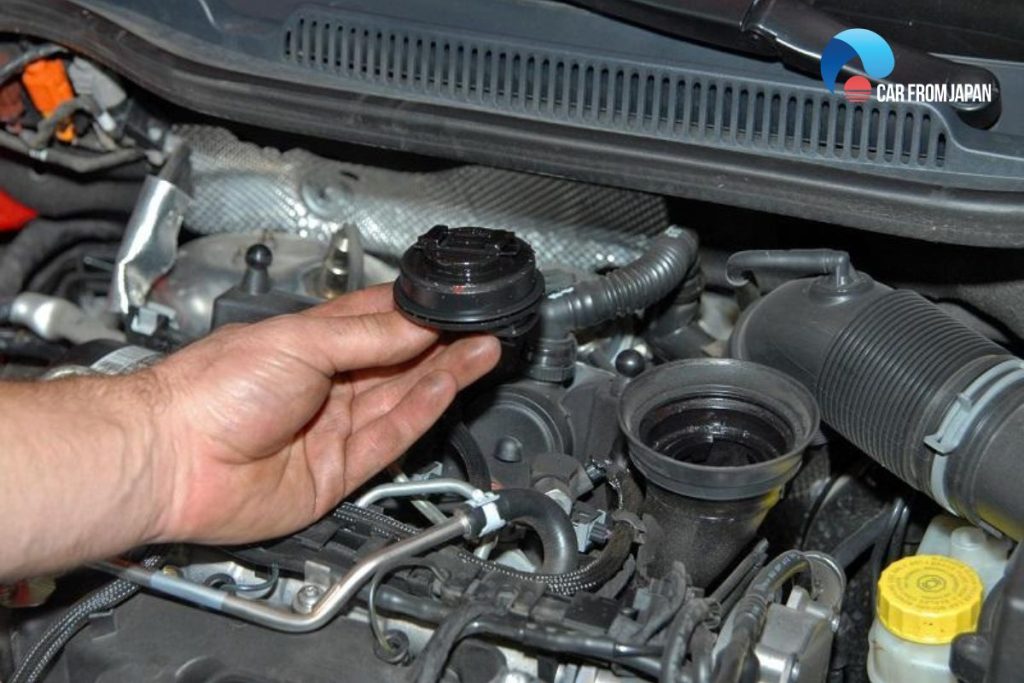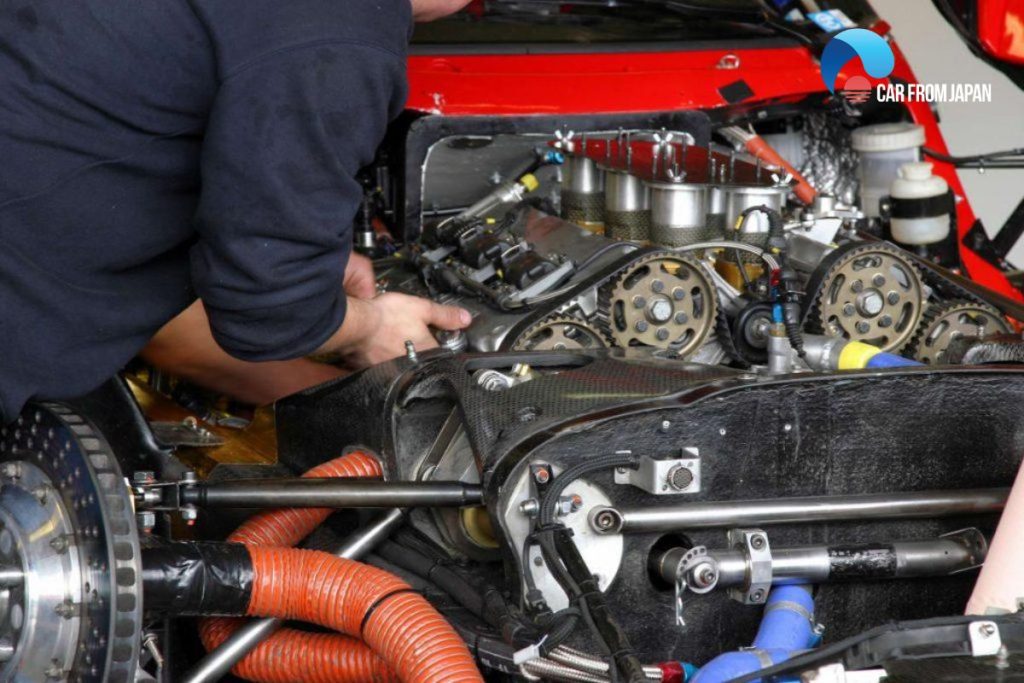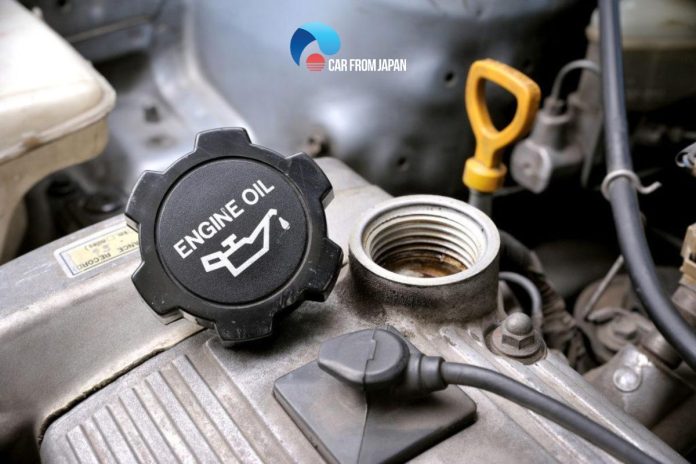Do you see the engine fume when opening the oil filler cap? Smoke from oil cap is not good news for your car and its engine.
What does it mean exactly? Well, it depends on the amount of smoke. A small amount is nothing serious but too much smoke is highly concerning.
Contents
The Reasons for Engine Emitting Smoke From Oil Cap
There could be two most common reasons for smoke coming from oil cap:
- Hot fuel bypasses worn valve stem seals and rings
- When the fuel bypasses worn rings and valve stem seals
The smooth operation of the engine components relies on the specific amount of tolerances between valve stem seals and piston rings.
The oil has to flow to all the parts to keep them moving without friction. Proper oil flow does not let the machinery lock or seize.
Over time, the components start showing signs of wear and the seals become thin. This wear can affect seals, allowing oil to leak into areas it shouldn’t, such as the combustion chamber.
Thinned or damaged valve stem seals allow oil to seep down the valve stems and into the cylinders, while worn piston rings fail to effectively seal the combustion chamber, allowing oil to bypass the pistons.
When the fuel drips through the piston rings and valves and gets into the combustion chamber, it turns into smoke with each firing shot of the fuel-air mix. The speedier you drive the car, the more will be the amount of oil leaking and smoke production.
If the engine is running and you open the oil filler cap, the steam will blow out because during operation the engine will generate steam, so on the new engine cover there is a 1-way steam valve to support the brake.
Noticing the steam is ejected and there is no white or blue smoke, the engine is working fine. But if there is blue or white smoke, it is a big possibility that the engine has damaged piston rings and then we should replace or repair it.
In addition, your oil cap may be tight enough to create the pressure in the crankcase normally handled by a PVC system.
However, this pressure buildup is unlikely the primary cause of noticeable blue smoke; worn rings or valve seals are more probable culprits.
If you suspect an issue with your PCV system, it’s worth inspecting and cleaning or replacing the PCV valve and associated hoses. And in case faulty valve seals are the cause of the problem, they may require professional repairs.
Read More: The Reasons for Black Smoke Coming Out of Exhaust Pipe
How To Test The Smoke Comes Out of Oil Cap?
Conventional method
You can easily find out whether the smoke coming out of oil cap is a fatal sign or not. Start the engine and let the car idle for some time.
Loosen the oil cap slowly and then remove it completely. If there is only a small amount of fume blowing out of the motor, you have nothing to worry about.

However, lots of fumes coming out with pressure is not a good sign. You should immediately take the vehicle to a servicing shop if the vapor seems to contain contaminated fume too.
Remember not to open the cap when the engine is hot. Also, close the tank with the cap when you are done. Clean up if there is any oil residue.
In addition to directly examining the smoke in oil cap, you can try a few more ways to find the cause if you have solid automotive engineering knowledge or want to learn more about some valuable tests.
Compression test
Compression testing is a valuable diagnostic procedure that measures the pressure inside each cylinder during compression.
Low compression in one or more cylinders can indicate problems such as worn piston rings, bad valves, or blown cylinder head gaskets.
By comparing the pressure readings on all cylinders, a qualified person can isolate the problem area and determine the extent of the damage.
This type of test helps identify mechanical problems within the cylinders that affect their ability to compress the air-fuel mixture.
Leak test
A leak test goes one step further than a compression test by identifying the source of the loss of compression. Compressed air is introduced into the cylinder through the spark plug bore, and the pressure drop rate is measured.
At the same time, the mechanic can listen for air escaping through the intake or exhaust system, crankcase, or cooling system.
This can help determine if the problem is with the piston rings, valves, cylinder head gasket, or another component.
Check coolant pressure
This test can detect leaks in the cooling system, including a possible puncture of the cylinder head gasket.
A pressure drop indicates a leak, which could be a faulty radiator cap, a leak in a hose, a bad water pump, or seriously, a leak in the cylinder head gasket that is allowing coolant to escape into the cylinders or crankcase.
Check the PCV valve
The positive crankcase ventilation (PCV) valve helps regulate crankcase pressure and remove harmful blow-by gases from your vehicle’s engine.
A faulty valve will create excessive pressure in the crankcase, forcing oil past the seals and gaskets, and leading to leaks and oil burns.
Checking the PCV valve involves checking for blockages and making sure the hoses connected to the valve are clear and not collapsed.
It is a relatively inexpensive repair, but it can be quite valuable in preventing more serious engine problems.
How To Solve The Problem Of Smoke From Oil Cap?
To handle the smoke from engine oil cap, you may have to check the condition of the stem valves and piston rings and replace them if necessary.
The best solution is to change both parts because the older parts won’t be able to keep up with the pressure created by the newly replaced component.

For example, changing only the stem valves will keep the pressure contained where it should be.
However, the old rings won’t be able to show the same strength and let the extra pressure to bypass through. The opposite will happen when you change the rings but keep the old valves.
Keep in mind that these temporary fixes may sometimes only drain the money. If your car releases a huge amount of smoke with contaminated fumes from the oil gap, opt for all the related components replacements.
FAQs on Smoke From Oil Cap
What color of smoke from the oil cap is a red flag?
White or light gray smoke: Could be harmless condensation burning off, but persistent white smoke may suggest coolant mixing with oil (head gasket failure).
Blue smoke: Indicates burning oil, which could mean worn piston rings, valve seals, or excessive blow-by.
Black smoke: Rare from the oil cap, but if present, it suggests incomplete combustion, excessive fuel in the oil, or PCV system issues.
Why does my engine smoke more from the oil cap when hot?
Heat causes oil and combustion byproducts to vaporize, making the smoke more noticeable.
However, if the smoke is thick or excessive, it could indicate worn piston rings, valve seals, or a failing head gasket.
Does aggressive driving increase the chance of seeing smoke from the oil cap?
Yes! Hard acceleration, high RPMs, and heavy loads increase cylinder pressure, which can force more combustion gases past worn piston rings, increasing blow-by and smoke from the oil cap.
Is it safe to drive with smoke coming from the oil cap?
It depends on the cause. If the smoke is minimal and due to normal oil vaporization, it’s usually safe.
On the contrary, excessive smoke, a burning smell, or noticeable oil loss could indicate serious engine problems that should be diagnosed immediately.
What happened with the smoke coming from oil cap diesel?
Smoke from a diesel engine’s oil filler cap indicates internal problems such as worn piston rings, valve seals, or a head gasket leak (white smoke).
Blue smoke means oil burns, while white smoke suggests coolant in the cylinders.
Watch more this video from Chris Lovino to learn more about the oil cap smoke!
Final Thoughts
If you notice some smoke from oil cap, it can be a normal situation. However, you should observe carefully the color and smell of smoke.
If it’s thick and has a strange smell, the problem can come from the combustion chamber. Otherwise, you should check careful other parts like piston rings and the valve stem seals.
To ensure safety, you should get an appointment with a trusted mechanic as soon as possible!




Hiii sir I have Toyota diesel car it’s smokes when I put out my oil cap and dip Strick. Then I changed my car pistons ring with a new original Toyota product and head gasket. After fix it up I saw the smoke is come from oil cap. What to do next to fix it that????
after changing piston -and rings is possible it be because of passing gas pressure between valves and being backlash between valves and its sealings?